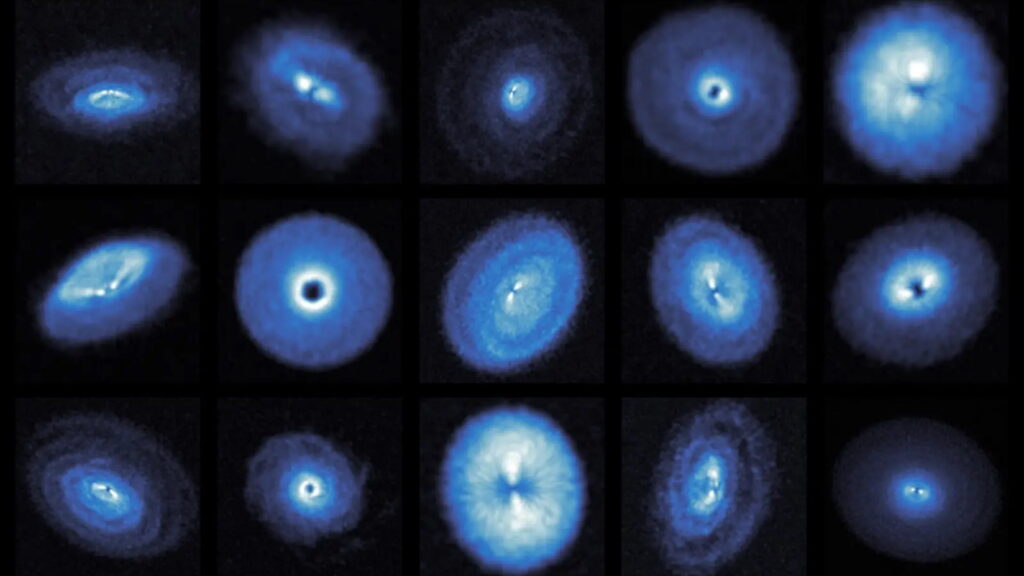Our solar system has been around for about 4.6 billion years, but there are still new planetary systems forming. Recent advancements in technology have allowed an international team of researchers to capture incredibly detailed images of protoplanetary disks in over a dozen young star systems.
The exoALMA project utilizes the Atacama Large Millimeter/submillimeter Array (ALMA) in Chile to observe these early planetary systems. Instead of directly imaging the planets, astronomers use ALMA to detect the effects of these planets on their surroundings.
According to Christophe Pinte, a project co-leader at Monash University’s Institute of Astrophysics and Planetology in Australia, this method is like detecting a fish by observing ripples in a pond rather than the fish itself.
The team developed new calibration techniques and analysis methods to enhance the quality of their observations. By aligning data from different time points and filtering out unwanted noise, they were able to identify potential areas of planet formation in the protoplanetary disks of 15 young star systems.

This study provides a comprehensive look at the 3D structures of multiple protoplanetary disks. These disks, located hundreds to about 1,000 light-years away from Earth, exhibit characteristics such as swirling gas influenced by young planets’ gravity and rings and gaps of dust within the disks. The research also highlights the dynamic nature of protoplanetary disks, showcasing the intricate interplay between cosmic dust and gas.
According to principal investigator Richard Teague, the new data collection methods provide a significant enhancement in observing planet-forming systems, akin to upgrading from reading glasses to high-powered binoculars.
Title: The Enchanting World of Bioluminescence
Bioluminescence is a fascinating phenomenon that occurs in various organisms, from tiny bacteria to large marine creatures. This natural light show is created through a chemical reaction within the organism, resulting in the emission of light. The enchanting glow produced by bioluminescent organisms has captured the imagination of scientists and nature enthusiasts alike.
One of the most well-known examples of bioluminescence can be found in fireflies. These insects are able to produce light through a complex process involving luciferin, an enzyme called luciferase, and oxygen. The result is a soft, pulsating light that serves as a form of communication and mating display. Fireflies are often seen lighting up the night sky in a mesmerizing display of bioluminescence.
Another striking example of bioluminescence can be found in certain species of marine organisms, such as jellyfish and plankton. These creatures are able to produce light through a similar chemical reaction, creating a stunning display of glowing colors in the dark depths of the ocean. The bioluminescence of these marine organisms serves various purposes, including attracting prey, confusing predators, and communicating with other members of their species.
Bioluminescence is not limited to insects and marine creatures; it can also be found in fungi, bacteria, and even some species of plants. The diversity of organisms that are capable of producing light through bioluminescence is a testament to the beauty and complexity of this natural phenomenon.
Scientists are still unraveling the mysteries of bioluminescence and its many uses in the natural world. From aiding in camouflage to attracting mates, bioluminescence plays a crucial role in the survival and evolution of many organisms. The study of bioluminescence has also led to the development of new technologies, such as bioluminescent markers for tracking cells in medical research.
In conclusion, the world of bioluminescence is a captivating and enchanting realm that reveals the beauty and diversity of nature. From fireflies twinkling in the night sky to glowing jellyfish illuminating the depths of the ocean, bioluminescent organisms continue to amaze and inspire us with their natural light shows.


